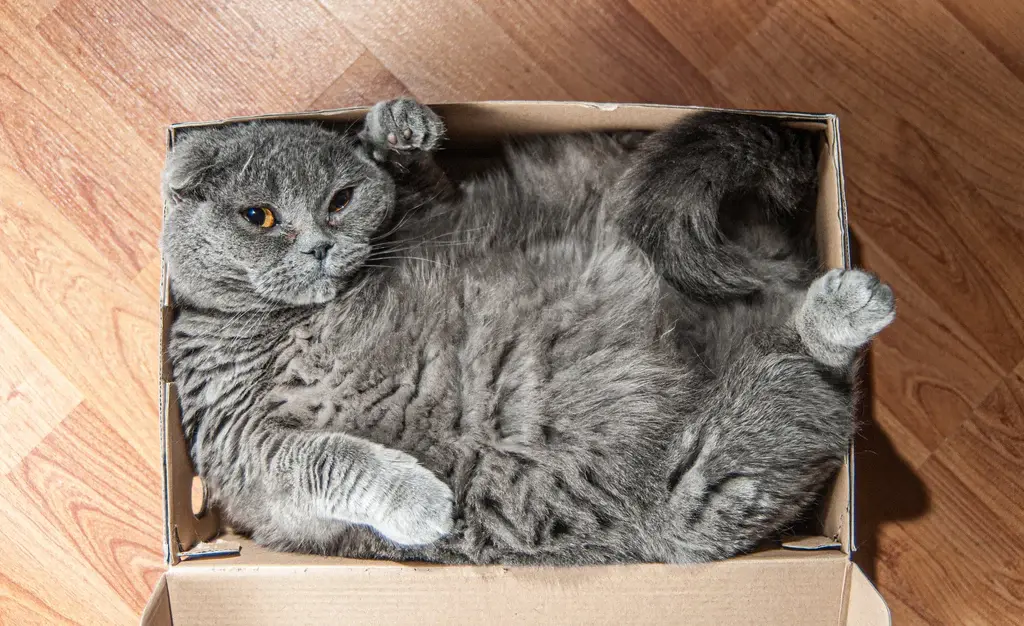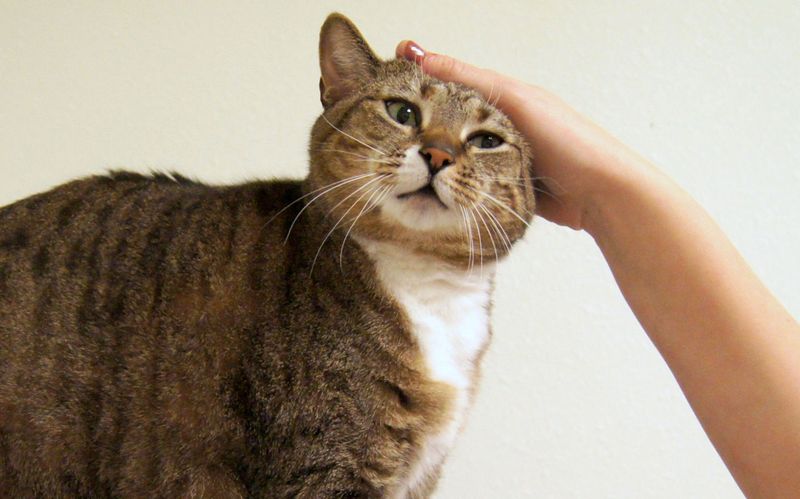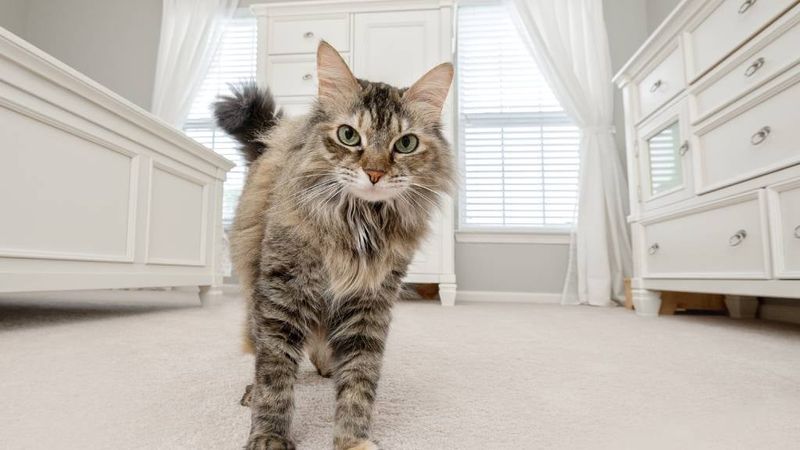📖 Table of Content:
Living with a cat isn’t just about feeding them and cleaning their litter box. It’s about entering a silent agreement—one with rules you won’t find in a manual, but will learn over time through experience, scratches, and the occasional offended glare. Cats aren’t dogs, and anyone who’s ever shared a home with one knows that they operate on a different wavelength entirely.
Every meow, tail flick, or side-eye glance communicates a preference or warning, and your job as their human is to interpret those subtle signals with reverence. These majestic little creatures may not speak our language, but they are masters at teaching us theirs, often without mercy. In return, we earn their trust and affection, which, as any cat owner knows, is a reward that must be earned—not demanded.
For both seasoned cat parents and curious newcomers, understanding the invisible etiquette of feline cohabitation is crucial. The following ten unspoken rules form the core of a peaceful, respectful relationship with your cat. Ignoring them may not cause a catastrophe, but your cat certainly won’t let you forget it either.
1. Respect the Cat’s Space
Privacy is a right that cats take very seriously. The moment a cat retreats under the bed or disappears behind the couch, it’s issuing a clear signal to be left alone. Interrupting these moments can shatter trust and make your feline companion wary of you. Like us, cats need solitude to feel secure and recharge from stimulation. Giving them the room they crave shows that you recognize and value their autonomy. Rather than chasing them down for cuddles, try simply being nearby and letting them come to you. Over time, this approach strengthens the bond without violating boundaries.
2. Don’t Force Affection
Affection on demand is not part of a cat’s lifestyle. Unlike dogs, who might eagerly welcome endless hugs, cats prefer affection on their own schedule. Initiating contact when they’re clearly uninterested can lead to agitation or avoidance. You’ll often find that the best cuddles happen when you least expect them—like when you’re reading or watching TV. Instead of forcing interactions, watch for cues such as slow blinks, soft purring, or head bumps, which indicate genuine interest. Patience in this area is a virtue that pays off with deeper connection. Trust builds when your cat knows you’ll respect their emotional timing.
3. The Box is Sacred
Whenever a cardboard box enters the house, your cat has already mentally claimed it. Boxes offer warmth, privacy, and a vantage point from which to observe their surroundings—essential qualities for a content feline. It might seem ridiculous to us, but to a cat, that crinkled Amazon box is the ultimate prize. Rather than tossing it immediately, let your cat explore and enjoy it for as long as they desire. Watching them curl up or pounce from inside the box becomes part of the fun. This simple gesture acknowledges their instincts and enriches their environment. Ultimately, a box is not trash—it’s temporary royalty quarters.
4. You Must Share Your Furniture
Ownership is a fuzzy concept when it comes to cats and furniture. What was once your chair, bed, or shelf is now shared territory, often weighted heavily in the cat’s favor. You might come home to find your cat sprawled across your desk or perched on your favorite pillow. Instead of relocating them, many cat owners find themselves adjusting their positions or waiting patiently. This behavior isn’t mischief—it’s your cat treating the home as its own domain. Offering soft blankets or cozy corners helps, but don’t be surprised when your seat remains the most coveted spot. Coexisting means adapting your expectations of “personal space.”
5. Accept the 3 A.M. Zoomies
Late-night energy bursts are part of the package deal with cats. Often when the house is quiet and the lights are off, your feline becomes a wild, thundering blur. These zoomies come from their crepuscular nature—they’re wired to be active during dawn and dusk. Rather than getting frustrated, try to see it as your cat burning off instinctual hunting energy. Providing playtime and enrichment during the day can help reduce the intensity of their midnight marathons. Some owners even leave out toys or create obstacle courses to direct the chaos. Remember, those 3 a.m. sprints are just your cat being their truest self.
6. Always Check Before Sitting
Settling into a cozy couch or pile of laundry can be dangerous if you don’t first scan for feline presence. Cats love warmth, soft textures, and stealthy hiding spots, making them masters of disappearing in plain sight. What looks like a lump in a blanket may actually be a sleeping kitty. Many cat owners have learned this the hard way, receiving glares—or worse—for an accidental sit. A quick check or gentle pat can save you both some trauma. By making this a habit, you demonstrate attentiveness to your cat’s habits and comfort. It’s a small step with big payoffs in safety and trust.
7. Treat the Tail with Reverence
The tail of a cat is more than just a fluffy extension—it’s an emotional semaphore. How they flick it, hold it, or swish it says a lot about their mood and intentions. Grabbing or tugging it is often seen as an act of disrespect or aggression. Instead, observe how your cat uses their tail to communicate interest, irritation, or relaxation. Children in particular should be taught early to admire the tail from afar. Touching it without invitation is one of the quickest ways to annoy a cat. Consider it off-limits unless they clearly offer it as part of a petting session.
8. Litter Box Etiquette is Critical
A clean litter box is non-negotiable in a cat’s world. Skipping scooping duties for even a day can result in silent protests or smelly reminders. Cats are meticulous by nature and expect their bathroom to reflect that. Maintaining it daily not only keeps your home odor-free but also shows your cat that you care about their needs. If a cat begins avoiding the box, cleanliness is often the first culprit to investigate. Placement also matters—it should be in a quiet, accessible location. Ultimately, your commitment to litter box hygiene directly influences your cat’s comfort and behavior.
9. Learn the Language of the Meow
Each cat has a unique vocal range filled with subtle differences in tone and pitch. A high-pitched meow might signal excitement, while a short chirp could mean curiosity or a greeting. Over time, attentive owners begin to decode this feline dialect naturally. Listening carefully and responding consistently helps build two-way communication. While cats may seem mysterious, they are constantly trying to make their needs and feelings known. Meows, purrs, and even silence all carry messages. Tuning in to their vocal habits fosters a deeper and more responsive relationship.
10. Everything is Theirs First
Possessions are a flexible concept when you have a cat. Whether it’s your laptop keyboard, fresh laundry, or open book, once a cat claims it, you’re just borrowing it. This sense of ownership extends from practical comfort to sheer curiosity. Attempting to reclaim items usually results in resistance or passive-aggressive relocation. Instead, try offering alternative comforts nearby—a soft blanket or designated perch. Sharing your things becomes part of the daily rhythm. Accepting this dynamic with grace is a rite of passage for every cat owner.










